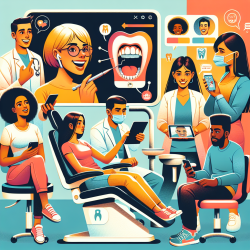Revolutionizing Clinical Practice with ECHO Telementoring
In the fast-evolving landscape of healthcare, staying updated with the latest best practices is crucial for practitioners aiming to provide optimal care. The research article "ECHO Telementoring for Pain, Palliative Care, and Opioid Management: Progress, Challenges, and Future Goals" sheds light on a groundbreaking model that can significantly enhance clinicians' skills and patient outcomes. This blog explores how the ECHO model can be a game-changer for practitioners, especially in managing pain and opioid-related challenges.
Understanding the ECHO Model
The ECHO (Extension for Community Healthcare Outcomes) model, initiated by the University of New Mexico in 2003, utilizes videoconferencing technology to connect specialists with primary care clinicians. This telementoring approach facilitates knowledge amplification, case-based learning, and best practice sharing, ultimately improving patient care in underserved areas. The model's success lies in its ability to democratize knowledge, enabling clinicians in remote areas to provide quality care with enhanced self-efficacy.
Impact on Pain Management and Opioid Prescribing
One of the critical findings of the research is the positive impact of the ECHO model on pain management and opioid prescribing practices. Clinicians actively participating in ECHO telementoring have shown significant reductions in opioid doses prescribed to patients. This outcome aligns with the urgent need to address the opioid crisis, particularly in rural communities disproportionately affected by opioid misuse.
Benefits of ECHO Telementoring
- Enhanced Knowledge and Skills: Clinicians gain access to cutting-edge information and training, improving their competency in managing complex conditions.
- Improved Patient Outcomes: By implementing evidence-based practices, practitioners can achieve better health outcomes for their patients.
- Cost-Effective Training: The ECHO model offers a cost-efficient way to disseminate knowledge without the need for extensive travel or resources.
- Community-Level Impact: The model not only benefits individual clinicians but also fosters improvements at the community level, addressing health disparities.
Challenges and Future Goals
Despite its success, the ECHO model faces challenges, such as clinicians finding time to participate amidst their busy schedules. However, ongoing legislative support, like the ECHO Act, aims to expand the model's capacity and sustainability. Future goals include broadening the model's application to other fields, such as education and first responder training, further amplifying its impact.
Encouragement for Practitioners
For practitioners seeking to enhance their skills and improve patient care, engaging with the ECHO model offers a promising pathway. By participating in telementoring sessions, clinicians can stay at the forefront of medical advancements and contribute to a global network of knowledge sharing.
To delve deeper into the research and understand the comprehensive findings, I encourage you to read the original research paper: ECHO Telementoring for Pain, Palliative Care, and Opioid Management: Progress, Challenges, and Future Goals.










